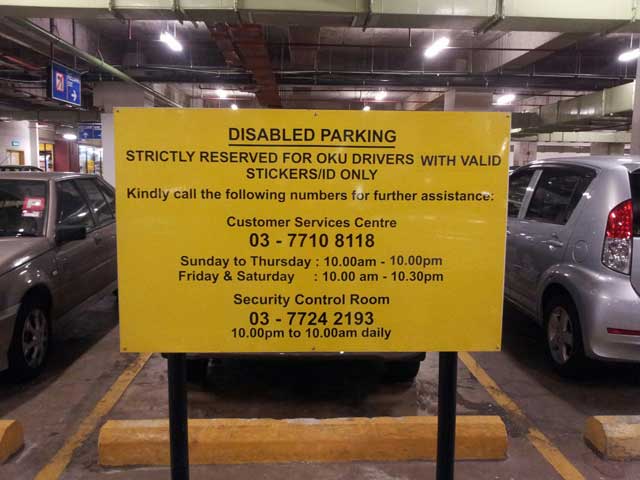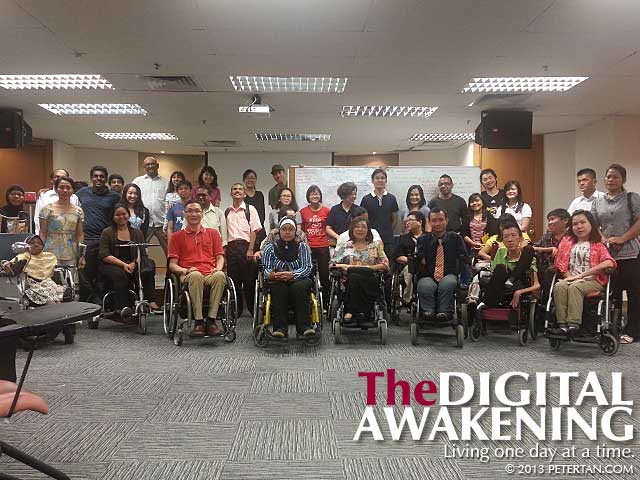When Majlis Perbandaran Ampang Jaya (MPAJ) came to remove the road hump on 16th January, I was away at Bandar Baru Sentul for the Regional Asia Pacific Training of Trainers on Disability Equality Training workshop. Otherwise, I would have loved to see it being removed. Jamali Othman, the MPAJ engineer was on site to oversee the demolition work together with Gary Lim, Head of Legal Bureau for MCA Pandan Division, and his assistant Winnie.
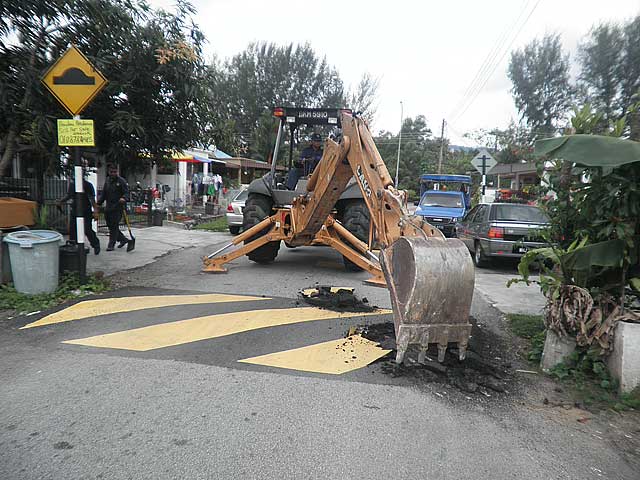
MPAJ officers using the backhoe to scrape away the road hump.
Image courtesy of Gary Lim.
Gary and Winnie had been pursuing the matter with MPAJ on our behalf after Dorothy Cheong, the ahli majlis for our zone, did little to help us resolve the issue. As part of our campaign, we had sought legal advice as another option which we are glad we did not have to resort to. With help from friends we got the story published in Berita Harian and The Star. At the same time, as residents whose houses faced the hump, we sent a complaint to the Yang DiPertua MPAJ via email, outlining our objections on 28th October 2012. Jamali came to see us on 8th November 2012 to discuss a solution to the matter.
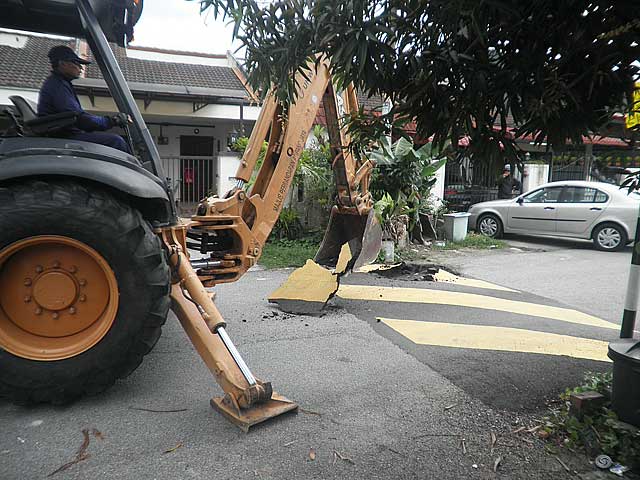
Another shot of the removal of the hump by MPAJ.
Image courtesy of Gary Lim.
We initally approached Jenice Lee, the ADUN for Teratai, after the hump was built. She had asked Dorothy to look into the matter. Dorothy kept insisting that the hump was built at the request of a majority of ten residents along the road. She also said “I believe people of your situation would more than welcome it because it will practically slow down vehicles from speeding and thus safety is the priority in the mind of these residents in your neighbourhood.”
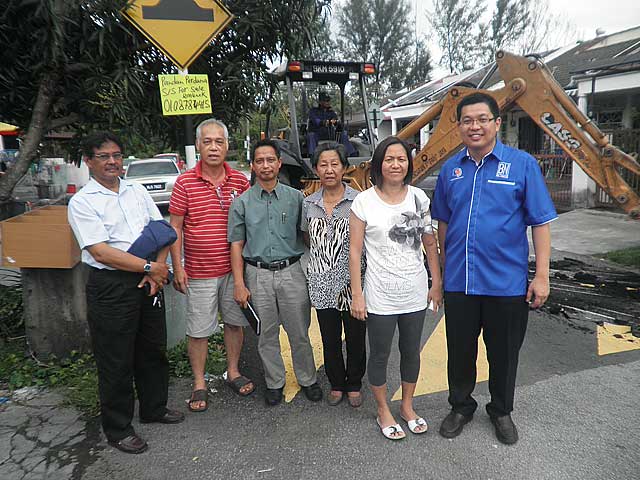
The neighbours with Jamali Othman (3rd from left), Winnie (4th from left) and Gary Lim(right).
Image courtesy of Gary Lim.
My lengthy explanation to her and Jenice that the hump is a barrier to my mobility and a hazard to my safety fell on deaf ears. Jenice then suggested a meeting with the other residents to sort this out. We unanimously objected because when the hump was built outside our houses, we were never consulted first. Jenice even mentioned that “From the picture I received, the hump is built in between your house and your neighbour.” It was clear how little she understood what our complaints were all about.
In our letter to the Yang DiPertua, we pointed out that other residents were invited to sign a petition for the road hump twelve days after it was built, contrary to what Dorothy told me in her second email that MPAJ had received ten requests to install the road hump from residents in July 2012. Up till today, I still cannot understand why there was a need to get residents to sign the petition when a request by ten residents had already been submitted and approved by MPAJ earlier.
Dorothy was reported in The Star to have said, “We can’t entertain one person’s complaint as we want to help everyone.” Did she mean to say that my safety concerns are irrelevant? As a disabled person, I do not have the right to object to facilities that will endanger me, especially when it is right outside my house? She also obviously left out the fact that my neighbour had gone to her office to make a complaint and sought her assistance on this matter as well.
Anyway, I am glad this is all over now. Many people had a hand in helping us resolve this matter in one way or another. Thanks to Gary Lim and Winnie for their relentless pursuit to have the hump removed; Pierce Wong who connected me to Datuk Wong Sai Wan to get the news published in The Star; Paul Choo who came out with the caricature to highlight the issue; Edmund Bon, Khor Boon How and team for the legal advice; and to everyone who has supported us. All your effort came to fruition. Thank you.

